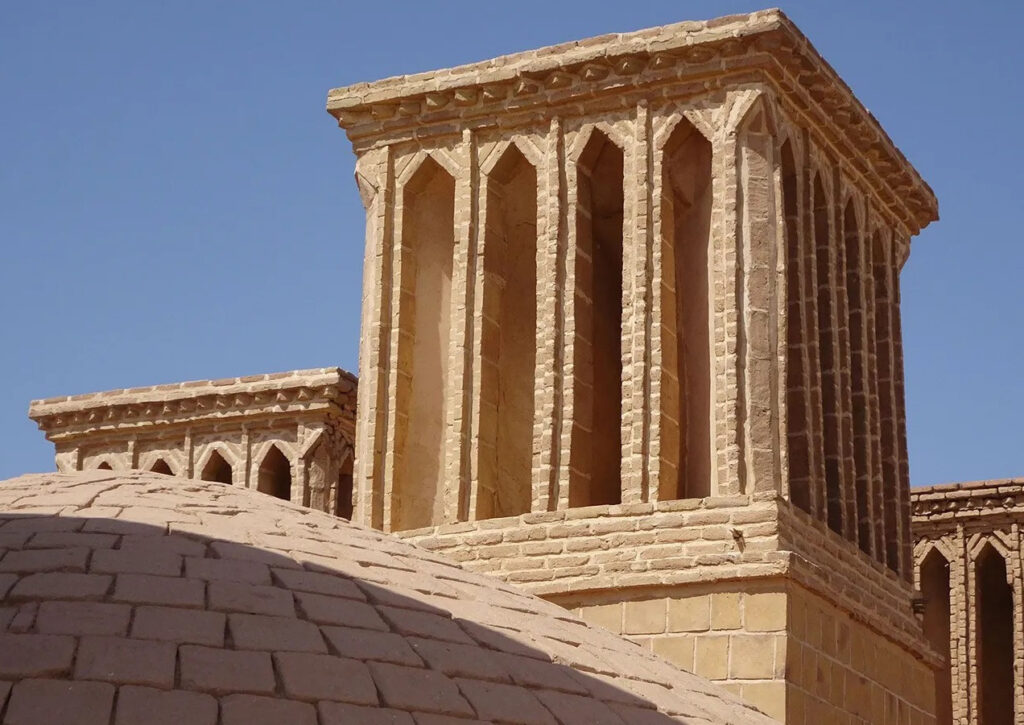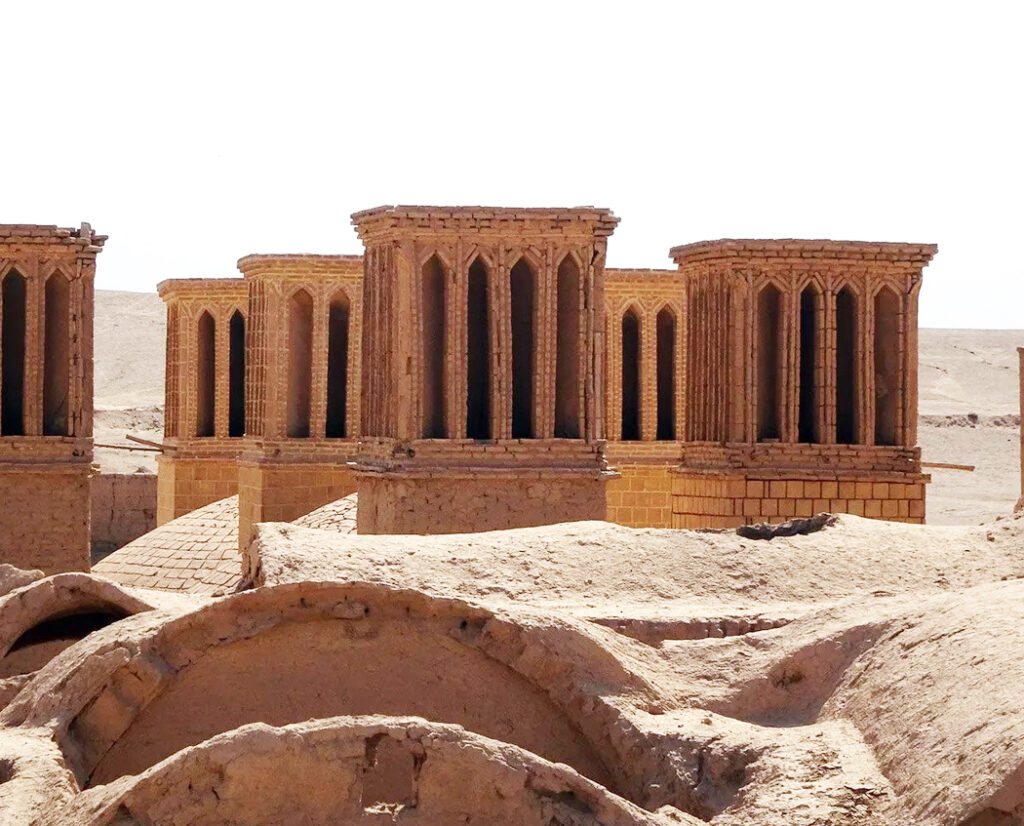Cheap air conditioning
How hot is it? It is summer and the media is certainly letting you know how close we all are to expiring in the extravagant heat. Did you ever wonder how the ancient civilizations in the desert areas coped with the hot weather? Well in many countries they built their own natural air conditioners. Particularly, Persia’s “wind catchers” called “badgirs” to adapt to the region’s harsh desert environment. Wind catchers are tall, chimney-like structures (Pictured) that protrude from the rooftops of older houses in many of Iran’s desert cities. In their simplest form, wind catchers harness the cool breezes and redirect them downwards either into the home or into underground storage rooms to refrigerate perishable foods. Studies have shown that wind catchers can reduce indoor temperatures by around 10 degrees.
From ancient Persians and Egyptians to Babylonians and Arabs, civilizations have striven to adapt their architecture to the harsh, hot climates of their environments by developing natural ventilation methods. Examples of wind catchers can be found across the Middle East and Egypt, as well as in Pakistan and India. There is an ongoing dispute between Iran and Egypt over the origin of the wind catcher. Paintings dating to around 1300BC discovered near modern-day Luxor depict two triangular structures atop Pharaoh Nebamun’s royal residence, leading Egyptian archaeologists to believe the first wind catcher was developed in Egypt. Most of the wind catchers in the residential buildings of Yazd are rectangular in shape, with inlets on each of the four sides to catch wind blowing from multiple directions. However, hexagonal and octagonal wind catchers are also common. “The wind catchers here are multi-directional, because we have pleasant winds coming from all directions. “Here we are surrounded by mountains that block the dust filled desert winds.”
Often the cool air from the wind catcher passes through an alcove in a room on the ground level, down through a vent into the zir-zamin (basement), where perishable goods are stored. In the Lariha House, I felt a slight chill as I descended the 38 steps into an even deeper cellar space called the sardab (meaning ‘cold water’ in Farsi), where water from the qanats (underground channels used to transfer water from mountains to cities) would cool the incoming air. “These underground aqueducts have great utility,” said Zohreh Montazer, an expert on the water system. “They constitute a source of water supply and make it possible to cool the dwellings and to preserve food at an ideal temperature.” Iran is estimated to have around 33,000 operational qanats today, a significant drop from the 50,000 in use in the mid-20th century… So don’t complain, use your head and invent your local solution.
It is so hot…
My landlord wants to talk to me about why my heating bill is so high.
I told him my door is always open.
It is so hot that McDonalds is frying burgers on parked cars.
“It’s just too hot to wear clothes today,” said Jack as he stepped out of the shower. “Honey, what do you think the neighbors would think if I mowed the lawn like this?” “Probably that I married you for your money,” she replied.
Bob: “Here, try this cup of coffee from Nicaragua.”
Jim sips it and says, “Wow! All the way from Nicaragua and it is still hot!”
August 9th Birthdays
1985 – Anna Kendrick, 1991 – Adeliade Kane, 1963 – Whitney Houston, 1957 – Melanie Griffith
1967 – Deion Sanders, 1993 – Berkely Duffield, 1991 – Bill Skasgard, 1974 – Kevin McKidd




